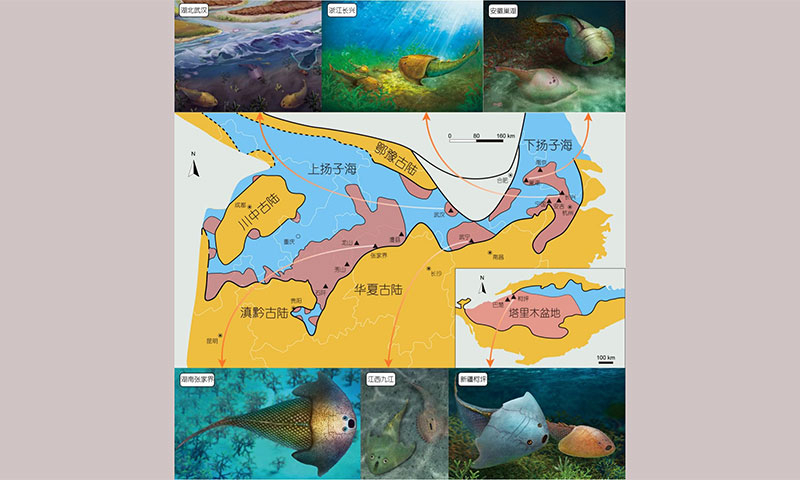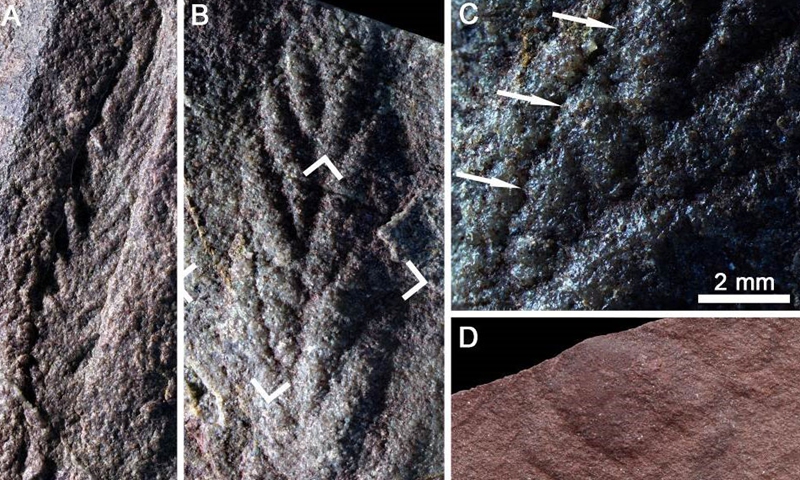Southern China was an ocean connected to NW China's arid Tarim Basin 438m years ago: Chinese paleontologists

Photo: Courtesy of Institute of Vertebrate Paleontology and Paleoanthropology of the Chinese Academy of Sciences
Chinese paleontologists analyzed fish fossils left in ancient stratums and found that the Yangtze River basin in southern China was ocean some 438 million years ago that connected the region to the Tarim Basin which now lies in China's arid northwest.
Paleontologists with the Institute of Vertebrate Paleontology and Paleoanthropology of the Chinese Academy of Sciences (CAS) have done research over the past two decades in nearly 50 counties across 10 provinces and regions along the Yangtze River, as well as Northwest China's Xinjiang Uygur Autonomous Region, and collected large amounts of ancient fish fossils.
Paleontologists found the South China blocks, roughly today's Yangtze River basin, was a sea some 438 million years ago in the Silurian Period. The sea was divided into the upper Yangtze sea and lower Yangtze sea, connected by a narrow waterway, according to a press release by the institute on Thursday.
The Tarim Basin, some 4,000 kilometers away in current Xinjiang, was connected to the South China blocks then, judging from similarities in ancient fish that lived in the two places.
The ancient coastline was identified through a unique red stratum from the Silurian Period, which is characterized by fine rocks of purple-red, yellow and gray-green. The stratum is thicker at the border of the ancient land and ocean and thinner deep inside the ocean.
The indicator species was the Galeaspids, an extinct kind of jawless marine and freshwater fish, which is striking similar in the unique red stratum. Their richness in Silurian Period stratum and extensive distributions across different regions make it an ideal species to compare and reconstruct ancient stratums.
The fossils are also solid evidence to support the theory of continental drift. Fish fossils found in the Bachu area in Xinjiang are highly similar to those found in Changxing, East China's Zhejiang, and in Chaohu, East China's Anhui. The species of fish did not have a long-distance migration suggesting the two areas, 4,000 kilometers apart today, belong to the same sea floor more than 400 million years ago. The plate of the Tarim Basin was close to the equator at that time.
The research results were published on volume 46 of the Journal of Stratigraphy.




